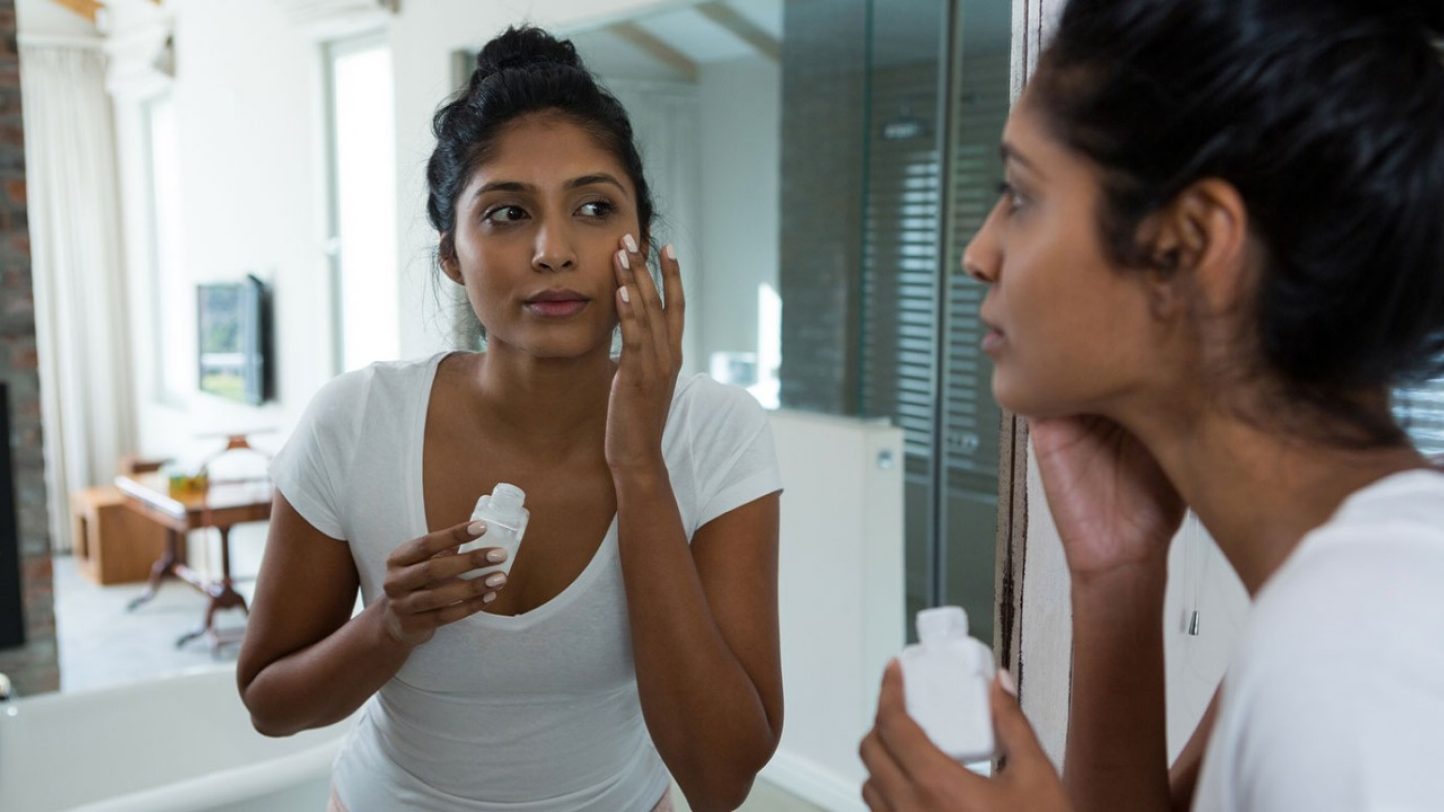Yes, you do need to apply sunscreen even when you are indoors.

Yes, you do need to apply sunscreen even when you are indoors.
Here's why!
A sunscreen protects the skin from ultraviolet (UV) rays and blue light i.e the closest to invisible ultraviolet light on the color spectrum which primarily omits from electronic devices like laptops and mobile phones. Needless to say, it is present even when there is no sun in the form of UV light spectrum rays contributing to premature aging. The UV light rays are harmful rays that can even penetrate through clouds and window panes. Also, harmful HEV (High Energy Visible Light) or Blue Lights from phones and laptops can be a reason that highly contributes to premature aging with visible effects such as wrinkles, photoaging, fine lines, dark spots, etc.
Light UV rays (UVA ,UVB and UVC) and blue light penetrate the outer skin layers first. With prolonged exposure, the rays will continue to penetrate the dermis (the middle layer of skin), killing the present skin cells and thus damaging your skin’s appearance, further. The light ultraviolet rays damage the fibers present in the skin called elastin which causes the skin to become saggy, stretchy, and in turn, it loses its ability to bounce back after stretching. The damaged skin will also take longer to heal from bruises or tears over time due to the damaged skin cells. The results of sun damage won’t be visible when you’re young, but its effects will show later in life. Exposure to the sun and electronic devices speeds up the aging process and does photodamage.
How to choose the right sunscreen?
Based on
SPF (Sun Protection Factor)
PPD (Persistent Pigment Darkening)
PA (Protect grade for UVA ray)
Every individual needs sun protection. Consistently wearing sunscreen with SPF 40 or greater and limiting sun exposure will reduce the risk of skin damage. While choosing the sunscreen keep a check on the PA rating as well. SPF determines the protection from UVB UVC rays and should be at least 40+ whereas PA Rating determines the protection from UVA rays and should be a minimum of 3+ (+++). Broadly there are two types of sunscreen:
-
Physical sunscreen
-
Chemical sunscreen
Physical sunscreen blocks UVA rays and UVB rays, like titanium dioxide or zinc oxide are the ones that block UV rays hence preventing damage to the skin. Chemical sunscreens contain chemical particles which absorb sun rays n destroy them. Physical sunscreen is more beneficial in terms of protection. Broad Spectrum sunscreen – a combo of both physical and chemical – is easily available in the market- the only thing you need to keep in mind while choosing sunscreens is – that it should block both UVA, UVB,UVC.
Various types of sunscreen are available in the market like cream-based, gel-based, lotion-based, spray forms, powder forms, etc. choose the one which is more beneficial and convenient to use. Like for normal skin types opt for a lotion-based sunscreen, frequent application could be required. Cosmetics also have sunscreen in them these days, but one should not solely rely on it. Oral sunscreens are a new trend that typically come in pill form, but they aren’t a complete substitute for topical creams where they consists of antioxidans( polypodium leucotomos),beta carotene and etc . Thereperform ance of oral sunscreens is not affected by external activities, such as swimming or sweating. Oral sunscreen will protect the entire body, including the trunk, lower limbs, as well as scalp, and hair. These can be used along with topical sunscreens.
Things to keep in mind while using sunscreen
It is advised to apply sunscreen approximately 20-30 minutes before leaving the house or going out in the sun. This will help the skin to absorb it beforehand and it is less likely to perspire when you step out. Re-apply it throughout the day but don’t overdo it and make sure you use it on all parts of your skin exposed to the sun, including ears, back, shoulders, arms, and legs. Reapply for every 6-8 hours or more frequently if you're sweating, exercising, or swimming.















